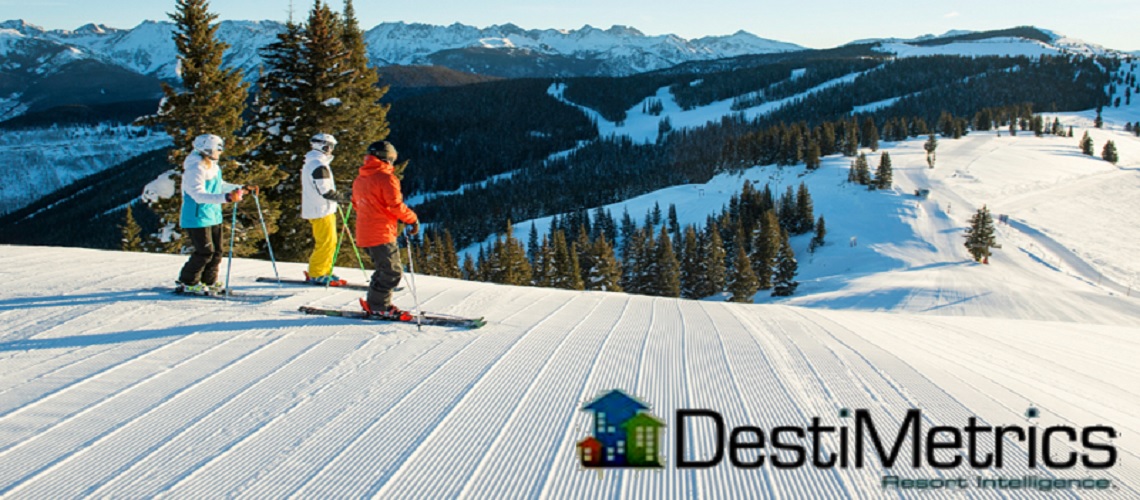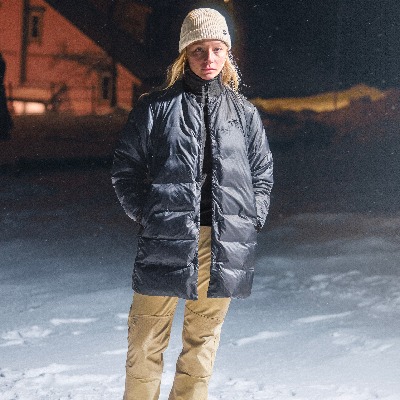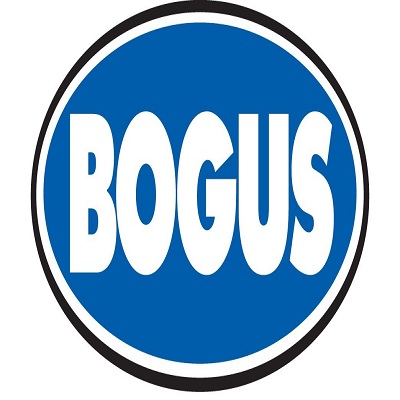Destimetrics - Rates And Revenue On Track To New Records At Western Mountain Destinations; Daily Rates May Be Topping Out

As a much more familiar-looking winter season winds down to a winning season, DestiMetrics,* the Business Intelligence division of Inntopia, released the latest one-, two-, and three-year comparisons for the mountain travel industry in their Monthly Market Briefing. While rate and revenue are almost certain to set new records for this season, occupancy is close but will depend on the strength of April. As for the upcoming summer, room rates do appear to be softening indicating the first pushback from consumers since February of 2021. But the war in Ukraine, tightening oil supplies, ongoing inflation, and the potential of yet another surge in the latest variants of COVID-19 will all contribute to shaping summer travel plans. The data is aggregated from approximately 28,000 lodging units in 17 western mountain destinations through March 31.
How it all stacks up for the month of March: multi-year comparisons
Compared to one year ago at this time when vaccines were becoming widely available, occupancy was up 10.5 percent and the Average Daily Rate (ADR) was up 41 percent to deliver a formidable 56 percent increase in revenue for the month.
Compared to two years ago at this time when COVID-19 had just shut down the entire ski industry on March 14, 2020, occupancy was up a whopping 118.6 percent and daily rates were up 46 percent to provide a staggering 219.2 percent increase in revenues.
Compared to three years ago at this time and a full year before the pandemic was unleashed, occupancy this March was up 2.0 percent compared to March 2019 with ADR up an impressive 39.8 percent for a 42.6 percent gain in revenue. Mountain visitors continue to tolerate dramatically higher room rates as demand for mountain lodging remains strong.
The full winter season: also compared to one, two, and three years ago at this time—including actual numbers for November through March and on-the-books for April
Compared to one year ago at this time when widespread vaccinating was easing destination travel anxiety, occupancy is up 25.5 percent with gains in all six months. The ADR is up 37.2 percent and destinations are experiencing a 72.1 percent increase in revenues.
Compared to two years ago when resorts were still reeling from the abrupt closure of all mountain operations, occupancy is up 29 percent (since March 2020 only operated for two weeks), with gains being posted in all winter months except January which is down 3.3 percent. For the full winter, ADR is up 25.8 percent and is yielding an impressive 62.3 percent increase in revenue for that truncated season that was approximately four weeks shorter than normal.
Compared to three years ago when lodging records were about to be broken and no one had heard of COVID-19, occupancy is currently up 2.6 with gains in four of the six months excluding November and January—down 5.1 and 4.9 percent respectively. The stunning difference is that ADR is up a remarkable 33.4 percent above that benchmark-setting season, and is allowing lodging properties to post a 36.9 percent gain in revenue with increases in all six months.
“Lodging performance so far this winter has done as expected, beating both last year and, of course, the 2019-20 season that ended so abruptly,” reported Tom Foley, senior vice president of Business Intelligence for Inntopia. “But we’re pleased and a little surprised to see that despite the Omicron surge in December and January which stifled bookings considerably, that the mountain lodging industry will be setting all time rate and revenue records this season—beating out the 2018-19 season by a long shot. And while that was pretty evident as early as 60 days ago, we’re watching closely to see if occupancy will set a record as well—although that will be tougher given the relatively mediocre snow conditions this year compared to 2018-19.”
Updated look for summer—on-the books data compared to the three previous years as of March 31
Bookings for the upcoming summer from May through October are ramping up as the winter season is nearing what looks like a very strong finish and the summer months appear to be continuing the strong pattern for occupancy and revenue. However, ADR for advance bookings appears to be hitting a plateau after two years of soaring growth.
Compared to one year ago when travel optimism was ticking up thanks to increasing levels of vaccination, aggregated occupancy is up 21.8 percent with gains currently being posted in all six months. In contrast, aggregated summer daily rates are up 3.8 percent with scant declines in May and June, the first time that declines have been recorded since February 2021. Despite those slight dips, on-the-books summer revenue is up a solid 26.4 percent in a year-over-year comparison.
Compared to two years ago when nationwide shutdowns were still the norm, summer occupancy is up 38.1 percent with gains in every month. Daily rates are up 30.9 percent and aggregated lodging revenues are up a strong 80.8 percent as the industry emerged from the bottom.
Once again, when comparing to the pre-pandemic summer of three years ago at this time, occupancy is up only a slight 2.3 percent with gains in every month except May which is down 15.4 percent. But despite the only modest uptick in occupancy, summer daily rates have soared 39 percent to provide lodging properties with on-the-books summer revenue that is up 42.2 percent compared to the summer of 2019.
“Perhaps the most notable data point in this month’s report is the softening of rate growth for advance summer bookings compared to last year,” noted Foley. “The 3.8 percent year-over-year gain for summer on the books is the lowest we’ve seen in 14 months and suggests that the dramatic gains recorded since the vaccine rollout in early 2021 may be losing momentum, particularly as inflation continues to influence the greater economy.” Foley went on to observe, “that said, with consumers very difficult to read right now, and seemingly bottomless pockets, don’t rule out an ongoing demand for occupancy driving rates up in the weeks ahead.”
Economic indicators
The Dow Jones Industrial Average (DJIA) rose moderately during March to gain 2.32 percent and marks the first end-of-month gain for the index since December. The Russian invasion of Ukraine is the largest concern for investors but a tightening of oil supplies is also having a negative impact. However, markets generally responded positively to the Federal Reserve’s interest rate hike in early March in an effort to curb high inflation. Despite the volatility, the DJIA is currently 5.1 percent higher than at this time last year.
The Consumer Confidence Index (CCI) edged up a slight 1.4 points in March or 1.5 percent. This is the first increase for the CCI since December but the seventh in the past 12 months as consumers appear to have more confidence in the economy as the pandemic wanes. But rising oil prices, high inflation, and the war in Ukraine have somewhat dampened their optimism about the months ahead.
The national Unemployment Rate dipped again during March from 3.8 to 3.6 percent bolstered by 431,000 new jobs added to payrolls and exceeding analysts’ expectations. The Leisure and Hospitality industry led the way in job creation during the month with 112,000 new positions but as of March 31, remains down approximately 1.1 million jobs from the pre-pandemic month of February 2020.
“While declining unemployment and new job creation continues as the most consistently positive economic news, there are some related issues that better illustrate the bigger picture,” explained Foley. “The shortfall of employees in the leisure and hospitality sector is creating significant challenges for managers to deliver the high level of service that visitors expect when paying much higher rates and fees than previous years. If that situation isn’t corrected or alleviated in the coming months, daily rates could be forced down as inflation pressures rise,” he concluded.













